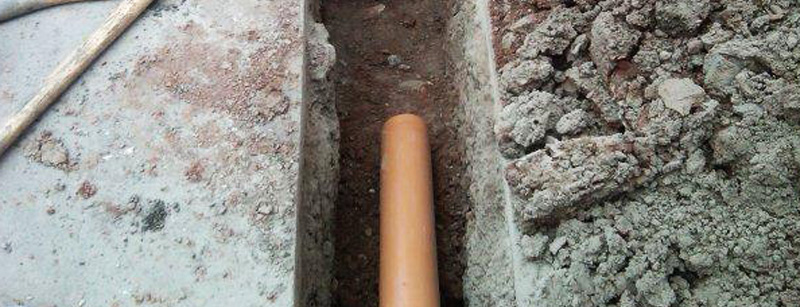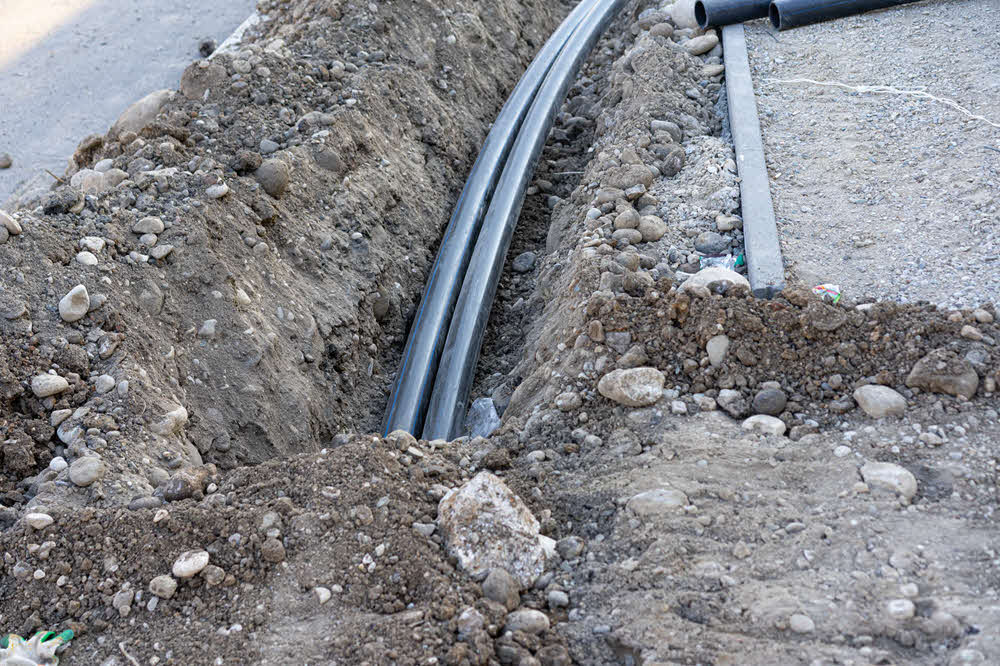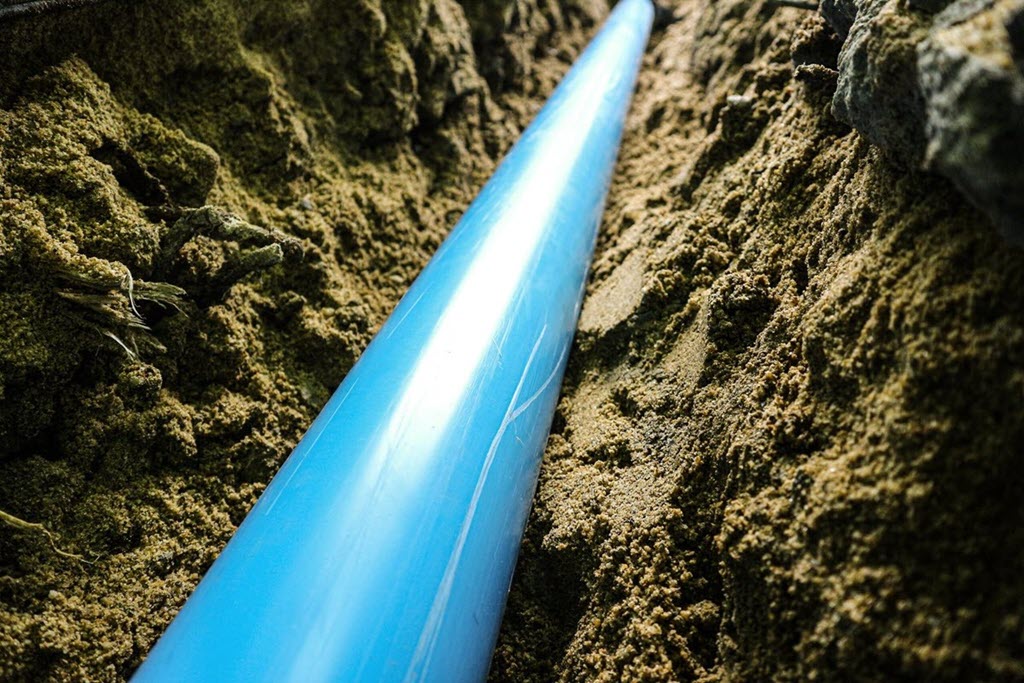Pipe Laying Servicesin Marine City MI
Pipe Laying Services to Support Efficient Infrastructure Development
We Are Locally Owned & Operated For Over 37 Years
Contact Us Today!
We Serve Businesses In And Around The Following Cities:
About Pipe Laying Services
Introduction to Pipe Laying in Marine City
Pipe Laying in Marine City is an extensive process that determines the efficiency and durability of sewage systems in commercial properties. This service is a crucial aspect of construction projects, enabling the successful installation of robust pipeline networks that manage waste-water drainage, gas supply, and storm water runoff. Ensuring proper installation of pipelines is paramount for securing functional utility lines in commercial buildings, making pipelaying a critical service to highlight.
The Process of Pipe Laying
The process of pipelaying begins with planning and preparation. Depth, location, materials required, and local building codes all influence the initial planning phase. The process typically involves running a propane line underground or installing a PVC stormwater pipe.
Once the planning is complete and relevant permissions are obtained, excavation starts. Trenches are dug according to the pre-determined plan to accommodate various pipes such as the drain pipe for rainwater, gas pipelines, and sewage lines. Care is taken to ensure the trenches are of appropriate sizes, as an underground storm pipe may require a different size trench than a sewage pipe.
Thereafter, the pipes are meticulously laid in the trench and carefully aligned to ensure they are straight and level. After installation, the pipes are inspected and pressure-tested for leaks before they are finally covered with soil. An example of a professional business familiar with this process is D&J Contracting, well-known for offering advanced pipelaying services.
Benefits of Professional Pipe Laying Services
Working with professionals like D&J Contracting for pipelaying can ensure a multitude of benefits for commercial properties. Their comprehensive knowledge and understanding of local codes and regulations in Marine City gives them an edge while installing different types of pipes, including running gas pipes underground and installing PVC stormwater pipes.
Professional companies usually have extensive experience in pipelaying, which allows them to preempt common issues, such as fluctuating weather conditions or ground instability, that may influence the pipelaying process. Their strategic approach can save commercial businesses from disruptive pipeline issues, costly repairs, and unnecessary downtime in the future.
Real World Applications of Pipelaying Services
In Marine City, several commercial entities, from shopping malls to office buildings, have witnessed the real-world applications and benefits of professional pipelaying. For instance, the efficient installation of a stormwater drain pipe can manage rainwater effectively during stormy weather, preventing flooding of premises and ensuring the building remains safe and dry.
Moreover, buildings relying on propane supply necessitate the running of a propane line underground, also handled by experienced pipelaying services. The correct installation of these gas lines ensures a safe and uninterrupted supply of propane fuel to commercial establishments.
In addition, the installation of a drain pipe for rainwater or an underground sewer pipe also forms the backbone of many city structures. These installations permit effective waste disposal and water management, preserving the integrity of the structure whilst ensuring hygiene and sanitation.
Notably, D&J Contracting excels in handling such complex pipelaying projects, guaranteeing a smooth and streamlined execution of all pipelaying services.
Wrap Up
A well-executed pipelaying project can contribute significantly towards the functional stability of a commercial establishment in Marine City. From the initial planning and excavation to the eventual pipe installation, every step is integral in establishing an efficient and robust pipeline system.
Companies like D&J Contracting assure meticulous pipelaying processes, adapting to the unique needs of each establishment and making them a trusted choice in pipelaying services. They exemplify commitment, versatility, and expertise in delivering projects that meet local standards, ensuring safety and efficiency in all pipelaying services.
Engaging with professional pipelaying services propels commercial properties towards infrastructural soundness, proving highly beneficial. So, for establishments seeking superior pipelaying services that ensure future stability, opting for reputed, experienced, and localized services like D&J Contracting can be a sound and productive decision.
Pipe Laying Services Gallery


Call Us Today to receive your Free Quote for
Pipe Laying in Marine City
Serving: Marine City, Michigan

About Marine City, Michigan
The area of Marine City had been Ojibwa territory for centuries before the first European contact. Beginning in the 17th century, French trappers and missionaries entered the territory, followed by settlers in the colonial period on both sides of the Detroit and St. Clair rivers. Farmers developed long, narrow plots that were laid out in the typical rectangular shape of colonial French, with the narrow end along the riverfront. The first Catholic Church was built by French Catholics at Catholic Point, where they had bought land before the United States was formed. French Canadians also lived on the other side of the river in a small farming community known as Petite Côte.
It was not until after the American Revolution that European-American settlers arrived in any number. In the 1780s they obtained a deed for land from the Chippewa Indians. The Americans began to call the community “Yankee Point”, because so many settlers came from the Northern Tier of states, with late 18th and 19th-century westward migration originating from New England and New York. They also called the settlement “Belle River” (Belle Riviere in French), as the French had; this later was applied as the name of a neighborhood.
The village was platted by Americans as Newport in 1835–37. Although never incorporated by that name, it was known as “Newport” for 31 years. In 1865, it was incorporated as the Village of Marine City. Thriving on lumber trade and shipbuilding, the village re-incorporated as a city in June 1887.
The second half of the 19th century was the period of great growth in the village, with many workers employed in the lumber and shipping industries. Rafts of lumber were moved down the St. Clair River in the spring to be worked at Marine City or Detroit. Shipyards built some of the many wooden ships that crossed the Great Lakes. Lake steamers linked passengers with small towns around the lakes. Their decks were full and their flags were flying. Marine City was centered on a park by the St. Clair River, where bands played in the bandstand at City Hall during the summer.
As the lumber business ran down with the exploitation of forests, the area became linked to other resource extraction. Freighters carried iron from Duluth, Minnesota, which had been mined in the Mesabi Range, to Ashtabula, Ohio for steel processing. They passed from Lake Superior through Lake Huron and to Lake Erie. Marine City was known as the town on the St. Clair River where the captains of lake freighters lived. Many of these men and their crews worked for the Pittsburgh Steamship Company. Formed in 1901 by US Steel Corporation, it became the largest commercial fleet on the Great Lakes.
In the 21st century, Marine City has become the home of ten antique stores. The Snug Theater is a 98-seat theater featuring live performances. It will be joined in 2014/15 by a sister theater, The Riverbank Theater, in a former bank building (originally Marine Bank & Trust) down the street. Also joining the two acting theaters is the old Mariner Theatre, which serves as a special event center, movie theater, gallery for fine art Models, and site of the builders model for the ocean-going Titanic. Restaurants and retail in downtown also cater to visitors and residents.
The Heather House, now operated as a bed and breakfast, was built in the Queen Anne Victorian-style. It was completed in 1885 after 2 years of construction for its owner, William Sauber. He was chief engineer for the Mitchell fleet of Great Lake steamers.
- According to the United States Census Bureau, the city has a total area of 2.46 square miles (6.37 km), of which 2.15 square miles (5.57 km) is land and 0.31 square miles (0.80 km) is water.
- It is considered to be part of the Thumb of Michigan, which in turn is a subregion of the Flint/Tri-Cities.
- Marine City can also be considered as in the Blue Water Area, a subregion of the Thumb.
- It is part of the Detroit-Warren-Livonia Metropolitan Statistical Area (MSA) and the Detroit-Ann Arbor-Flint Combined Statistical Area (CSA).
| Census | Pop. | Note | %± |
|---|---|---|---|
| 1870 | 1,240 | — | |
| 1880 | 1,673 | 34.9% | |
| 1890 | 3,268 | 95.3% | |
| 1900 | 3,829 | 17.2% | |
| 1910 | 3,770 | −1.5% | |
| 1920 | 3,731 | −1.0% | |
| 1930 | 3,462 | −7.2% | |
| 1940 | 3,633 | 4.9% | |
| 1950 | 4,270 | 17.5% | |
| 1960 | 4,404 | 3.1% | |
| 1970 | 4,567 | 3.7% | |
| 1980 | 4,414 | −3.4% | |
| 1990 | 4,556 | 3.2% | |
| 2000 | 4,652 | 2.1% | |
| 2010 | 4,248 | −8.7% | |
| 2020 | 4,079 | −4.0% | |
| U.S. Decennial Census | |||
As of the census of 2010, there were 4,248 people, 1,765 households, and 1,117 families residing in the city. The population density was 1,975.8 inhabitants per square mile (762.9/km). There were 2,015 housing units at an average density of 937.2 per square mile (361.9/km). The racial makeup of the city was 96.8% White, 0.3% African American, 0.7% Native American, 0.2% Asian, 0.5% from other races, and 1.6% from two or more races. Hispanic or Latino of any race were 1.7% of the population.
There were 1,765 households, of which 31.1% had children under the age of 18 living with them, 44.6% were married couples living together, 13.3% had a female householder with no husband present, 5.4% had a male householder with no wife present, and 36.7% were non-families. 31.3% of all households were made up of individuals, and 14% had someone living alone who was 65 years of age or older. The average household size was 2.41 and the average family size was 3.00.
The median age in the city was 40.2 years. 22.9% of residents were under the age of 18; 8.2% were between the ages of 18 and 24; 25.8% were from 25 to 44; 27.9% were from 45 to 64; and 15.3% were 65 years of age or older. The gender makeup of the city was 48.2% male and 51.8% female.
As of the census of 2000, there were 4,652 people, 1,860 households, and 1,212 families residing in the city. The population density was 2,120.8 inhabitants per square mile (818.8/km). There were 2,006 housing units at an average density of 914.5 per square mile (353.1/km). The racial makeup of the city was 97.29% White, 0.09% African American, 0.56% Native American, 0.26% Asian, 0.86% from other races, and 0.95% from two or more races. Hispanic or Latino of any race were 1.38% of the population.
There were 1,860 households, out of which 33.5% had children under the age of 18 living with them, 48.2% were married couples living together, 12.7% had a female householder with no husband present, and 34.8% were non-families. 30.8% of all households were made up of individuals, and 14.4% had someone living alone who was 65 years of age or older. The average household size was 2.50 and the average family size was 3.15.
In the city, the population was spread out, with 27.6% under the age of 18, 8.2% from 18 to 24, 30.5% from 25 to 44, 19.4% from 45 to 64, and 14.2% who were 65 years of age or older. The median age was 36 years. For every 100 females, there were 90.4 males. For every 100 females age 18 and over, there were 88.6 males.
The median income for a household in the city was $40,146, and the median income for a family was $47,308. Males had a median income of $39,228 versus $23,677 for females. The per capita income for the city was $19,722. About 7.6% of families and 8.9% of the population were below the poverty line, including 9.0% of those under age 18 and 16.1% of those age 65 or over.
Call Us Today to receive your Free Quote for
Pipe Laying in Marine City
Related Services in Marine City, Michigan
We Serve Businesses In The Following Zip Codes:
48007, 48015, 48021, 48026, 48035, 48036, 48038, 48042, 48043, 48044, 48045, 48046, 48047, 48048, 48050, 48051, 48066, 48071, 48080, 48081, 48082, 48083, 48084, 48085, 48088, 48089, 48090, 48091, 48092, 48093, 48098, 48099, 48225, 48230, 48236, 48310, 48311, 48312, 48313, 48314, 48315, 48316, 48317, 48318, 48397